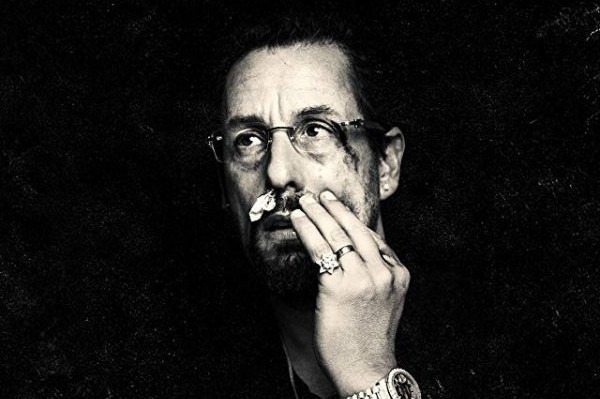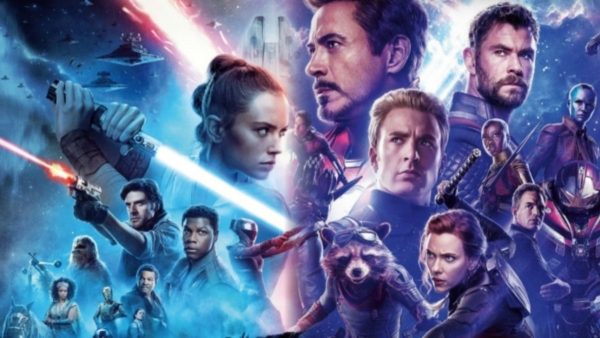Tom Jolliffe looks at the growing impact of A24 and why they’re the best thing in cinema right now….

The widening grip of Disney expands almost every year. They can seemingly rest a little on their laurels having generally found a formula that works with minimal boundaries pushed, or need for innovative dramatic ideas. Whilst they punch merrily away, batting off most of their tent-pole competitors (the ones they haven’t bought out), cinema finds itself at a crossroads.
On the one hand, Disney with all it encompasses, rakes in billions every year (breaking records with regularity in the process). Among their prize assets, Marvel have a release frequency that is frightening, and even with the tentpole to end all tentpoles, the Avengers over with (for now), all their respective characters tend to gross big bucks. Anything under a billion, even if it’s tantalisingly close, Marvel will probably put down to being a necessary loss leader, and furthermore, unlike Star Wars (again, which Disney owns) it doesn’t seem like over saturation has killed the Golden goose yet. Yes, in this crazy Disney lead world of cinema, The Rise of Skywalker, which brought a yawn inducing end to the recent rebirth of a galaxy far, far away, was deemed somewhat financially disappointing (it grossed comfortably over a billion dollars…and counting). It’s lunacy.
Every studio in the wake of Disney/Marvel tries to keep up. In many cases there are countless, repetitious examples of mega budgets being dolled out for ideas that no one asked for, and ultimately end up bombing. This is particularly true when the films themselves feel as if they’ve been poorly constructed from fragments of an MCU photocopied blueprint, fished out of a shredder bin. Never ending streams of unimaginative offerings like Terminator sequels, Charlies Angels remakes, tired Rambo sequels, and a whole host more seem doomed to failure. Even when a studio has at least a modicum of bravery to step away from established franchise with something like Gemini Man, their focus seems still to go for formula and focus on technical innovations over engaging stories and characters.
It’s been said before but most of what gets significant playtime in the multiplex cinema, seems to be big budget films or high profile star vehicles (even the idea of the star vehicle is secondary to franchise appeal now). You’ve got low budget films that rarely get afforded the chance to have significant big screen runs (or end up going straight to streaming/physical). It’s as if there’s a huge gulf between films costing a few million to make, and those costing over 150 million dollars. In between? Not that much, although…a tide is turning there. I sometimes wonder when studios fork out 150 mill on a film all but guaranteed to bomb, whether something is amiss. Ever see The Producers? Ironically if you look at the last two Terminator films as an example, they cost a lot but they didn’t particularly look it. I’m…not…suggesting…anything. Of course it could just be as simple as a complete miscalculated gamble gone wrong.

Slowly but surely the success of mid-level budget budget blockbusters like John Wick, and even more so, Joker have meant studios might just reappraise the need to spaff out $150 million plus every time they won’t to make a tentpole. Audiences are more savvy than given credit for on the whole. You don’t need a relentless, never-ending onslaught of CGI carnage that barely lets up. John Wick, on a fraction of the budget (the third film clocking around $75 a million budget, up from the 20mill the first cost) was certainly relentless and no less spectacular than the majority of mega budget action films of recent times. Joker ($55mill) even proved, with an indie sensibility and dramatic focus, that audiences will even sit and watch a film that isn’t packed with action, or belly laughs, or predictable maudlin romance. Okay, it was a renowned DC character in the centre of it, but it opens up interesting cinematic possibilities.
Even more interestingly though, has been a significant and prominent rise to a point of close to mainstream from an Indie production/distribution house, A24. They’ve been quietly humming away, breaking open some doors (even if just a few to start, and progressively more) for almost eight years. Here’s where they differ to most major studios filling the multiplexes. Their first remit is about art. It’s about dramatic engagement, genre redefining and most importantly diversity. They’ve given platforms to world and indie cinema, in an era where that early century platform has been slowly chipped away. Looking through their catalogue as a distributor and/or production company, says everything about their output.

Under The Skin, Locke, Hereditary, Ex Machina, Midsommar, Slow West, The Farewell, The Disaster Artist, The Lighthouse, Good Time, Waves and Uncut Gems to name a few. Since 2012, if I had to name 30 of my favourite films of the time, a good proportion would be A24 releases (including some of the above, and undoubtedly adding a few I’ve yet to see). Their success also greatly helps other films like Parasite. It’s always to mutual benefit for indie and world cinema when a film is successful. It means there’s a hunger, from a significant audience, to see these films and it perpetuates more being made. Further, to dispel a possible misconception about Indie film and indie film companies. It’s not about simply ‘arthouse’ films. There are art-house films, but they also create genre films. They’ve made fantastic horrors and thrillers. Comedies too. Uncut Gems, currently their biggest box office success is an excellent example of a modern thriller. It’s pulsating, gripping, tense and will make you feel physically exhausted watching it. What’s more…it’s made for a big screen experience. I came out of watching Uncut Gems feeling like I’d had the crap kicked out of me.
Just because a horror film may also want you to engage with it beyond simply scares, doesn’t make it pretentious either. A24 have near cornered the marketing on interesting horror films of late. The box office success of Uncut Gems and The Farewell (a film that hit me, repeatedly, beautifully, in the feels) also shows the willingness of audiences to go and engage with these films.

Looking particularly at The Farewell too, it’s a key piece of cinema. This is a time where diversity in cinema is tentatively balanced. Significant change always feels a tip of the scale away without ever quite happening, and the recent white dominated (almost atypical) nominations across the major ceremonies, seems to typify that. When, across a few of the award platforms, Scarlett Johansson and Margot Robbie can get nominated twice, but Awkwafina and Zhao Zhuzhen (who honestly hasn’t been bettered in that category this year, as good as other noms have been) are left empty handed, something doesn’t sit right. Likewise, Lupita Nyong’o can feel aggrieved for being overlooked with Us. It feels like, to be nominated as a minority artist you have to be completely above and beyond, and in the right sort of film. Parasite was thankfully too exceptional to ignore, but the lack of acting nods for that film also highlights frustrating presets in the voting.
It will get better. We may well get more interesting nomination line-ups in the upcoming years. This year I’d have loved to have seen Eddie Murphy get a deserved nod for his triumphant comeback in My Name is Dolemite. Likewise, there’s perhaps a preset backward stance within some of the voters when it comes to a streaming specialist shlub and dross merchant like Adam Sandler who turns up to award ceremonies in shorts and T-shirts that doesn’t sit right with ‘traditionalists.’ Even if he defied expectations and hit new heights in Uncut Gems. To me, part of getting a nomination is about surprising, about going above and beyond a bar, or digging within, something from the deepest depths. Did Leo push beyond his capabilities? I thought he was excellent in Hollywood, but he was in third gear (with the occasional shift into fourth). I loved The Irishman, Joe Pesci is great, Al Pacino is great, but are they getting rewarded for being old and dusting off their B+game in a genre they’ve tread numerous times? What would Adam Sandler have to do to get an Oscar nomination? Maybe agree to never make Grown Ups 3?
So whilst the potential remains to see some deep rooted change around awards season, it’s essential that A24 continue to stand at the forefront of the most interesting cinema. They need to keep hitting those heights. A decidedly (unfairly) A24 light representation at the Oscars this year was a particular shame, but keep hitting home runs and eventually, these films, championing the artists they do, and giving a platform for representative newcomers like Lulu Wang, means they can’t be ignored for too much longer. Slowly but surely too they will hopefully find more screenings, longer runs as the appeal of the lazy blockbuster wanes.
Tom Jolliffe is an award winning screenwriter and passionate cinephile. He has a number of films out on DVD/VOD around the world and several releases due in 2020, including The Witches Of Amityville Academy (starring Emmy winner Kira Reed Lorsch). Find more info at the best personal site you’ll ever see here.












